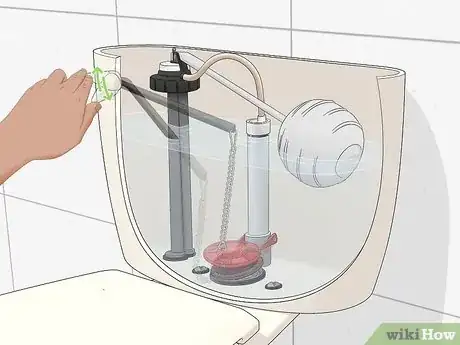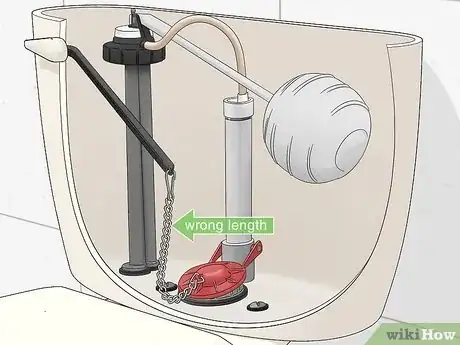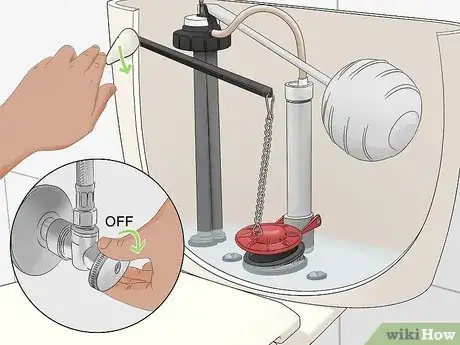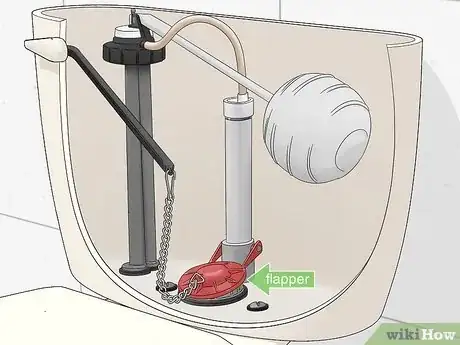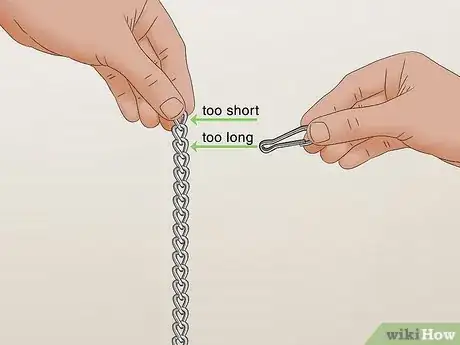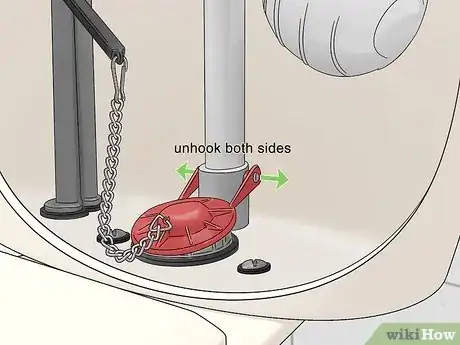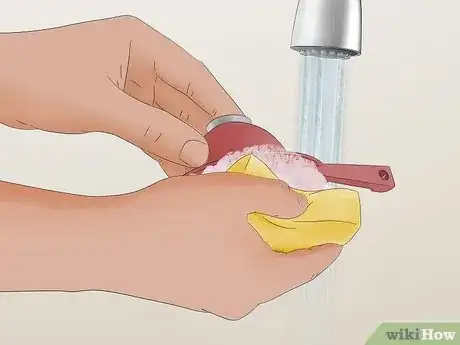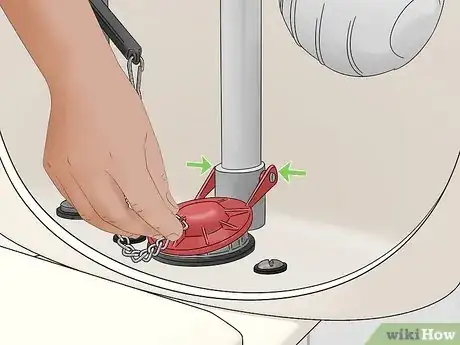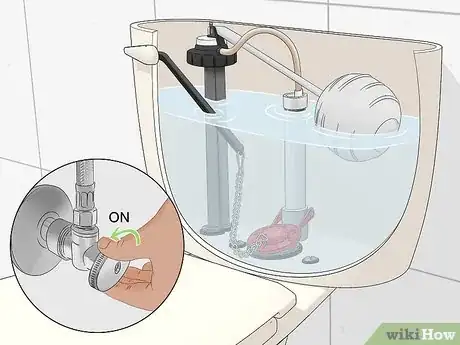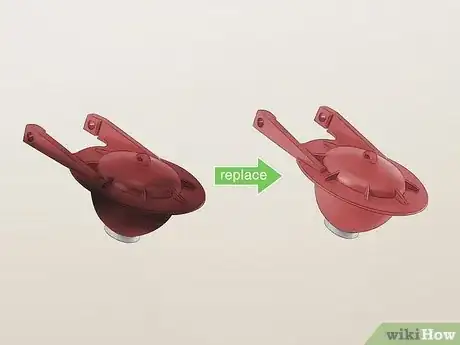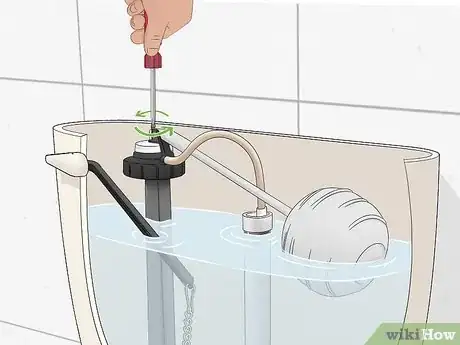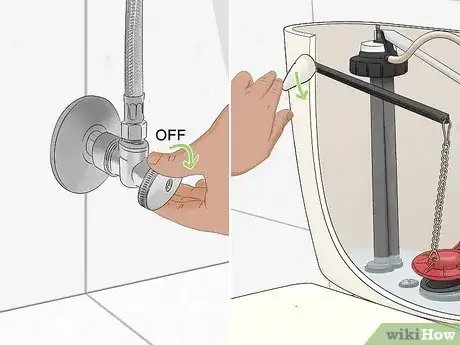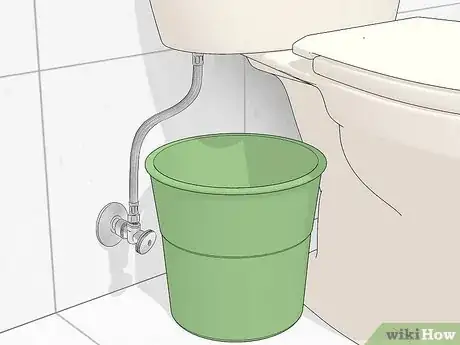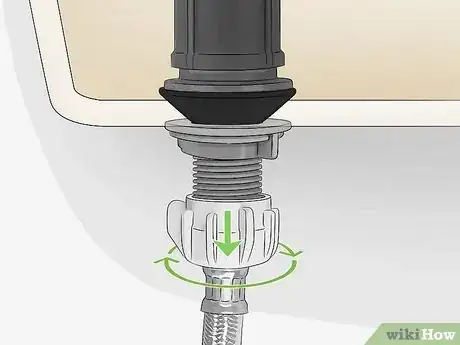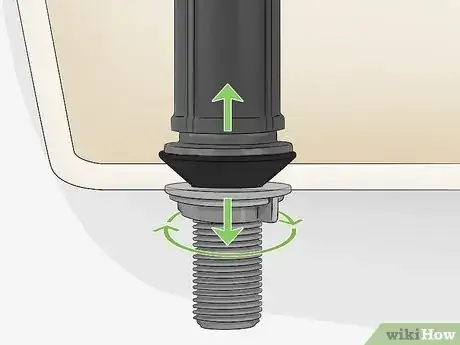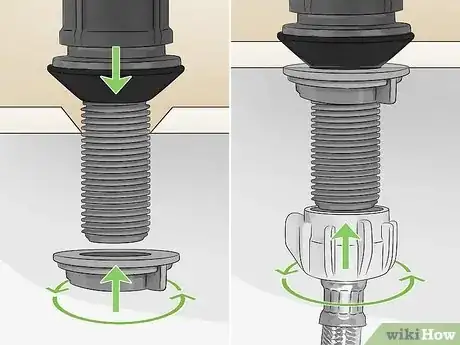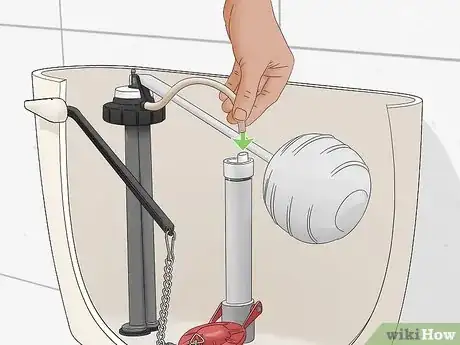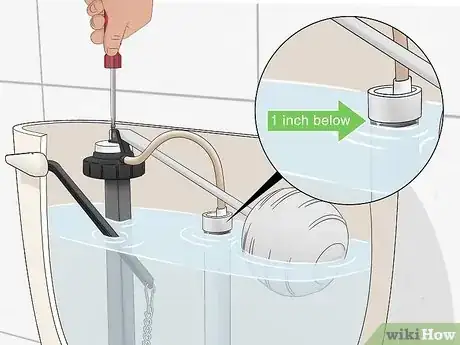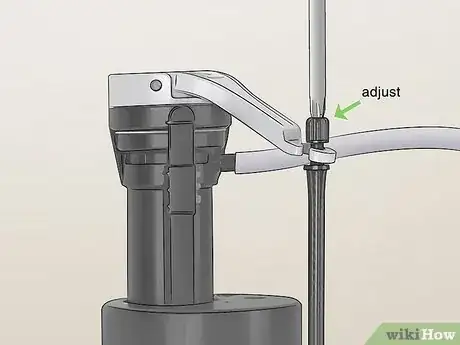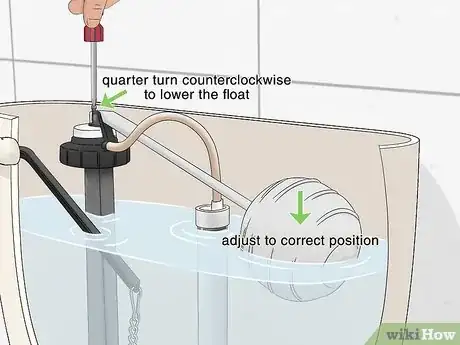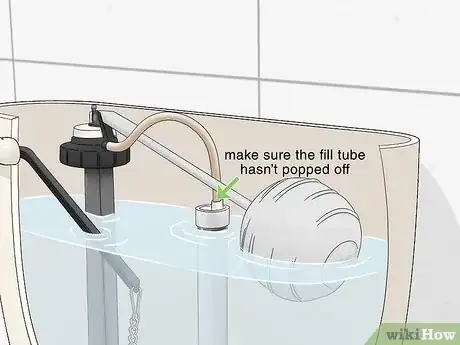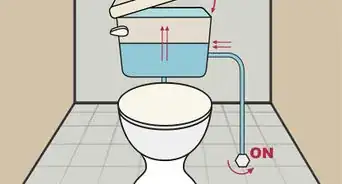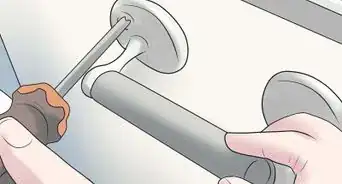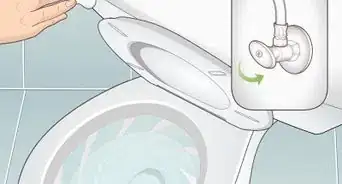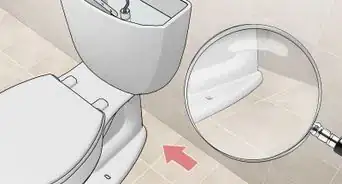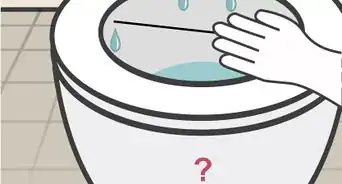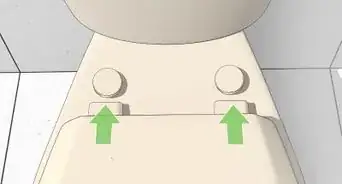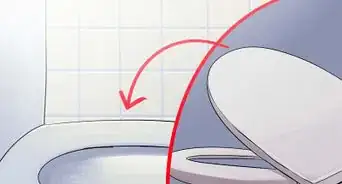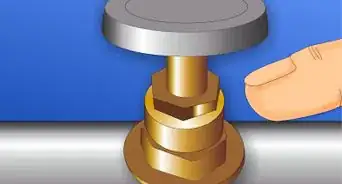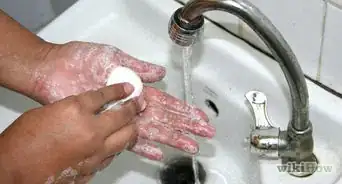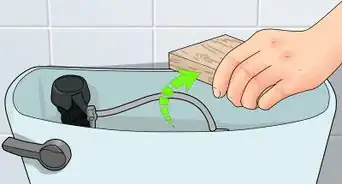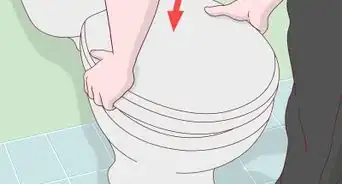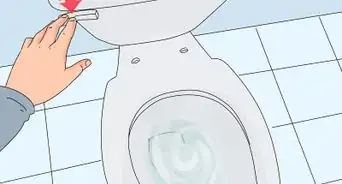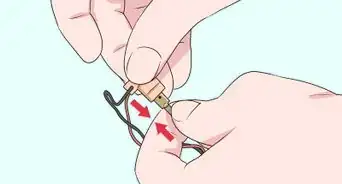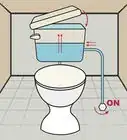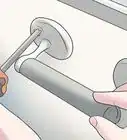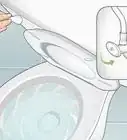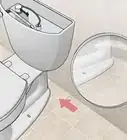- Flapper |
- Fill Valve |
- Float |
- Video |
- Q&A
This article was co-authored by James Schuelke and by wikiHow staff writer, Eric McClure. James Schuelke, along with his twin brother David, is the co-owner of the Twin Home Experts, a licensed plumbing, leak detection, and mold inspection company based in Los Angeles, California. James has over 32 years of home service and business plumbing experience and has expanded the Twin Home Experts to Phoenix, Arizona and the Pacific Northwest.
There are 13 references cited in this article, which can be found at the bottom of the page.
wikiHow marks an article as reader-approved once it receives enough positive feedback. This article received 22 testimonials and 87% of readers who voted found it helpful, earning it our reader-approved status.
This article has been viewed 6,319,157 times.
A running toilet can waste hundreds of gallons of water per day while running up your water bill—it can also just be super annoying to listen to the water trickle constantly. The best way to fix a running toilet is to start by diagnosing the problem. If the water flows constantly and spills into the overflow tube (the hollow piece in the middle), your fill valve is to blame. If the water isn’t overflowing, it’s probably your flapper. Finally, the water level itself could be to blame. In this article, we’ll show you how fix all of these problems and more.
Things You Should Know
- Check the flapper if the water in the tank isn’t overflowing. Ensure that the chain is properly hooked and the flapper isn’t worn out.
- If the tank is overflowing into the overfill valve, the fill valve needs to be adjusted or replaced.
- The water level itself may require adjusting. This is easy with the adjustment screw on the fill valve (same with or without float).
Steps
Flapper
-
1Jiggle the handle a bit to see if the water stops running. Sometimes, the water just keeps running because the chain connecting your handle to the flapper gets caught or knots up. If this is only a once-in-a-while kind of problem, try jiggling the handle after the water has filled the tank. If the water stops running, you’re good to go.[1]
- If this happens regularly, it’s a sign that your chain might be the wrong length. Open the tank and check how long the chain is running from the flapper to the handle.
-
2Turn off the water and drain the toilet. Before you can check the flapper for problems, turn off the water to the toilet by twisting the supply line valve counterclockwise as far as it will go. Then, flush the toilet to drain excess water from the tank.[2]
- The flapper is a round rubber seal that stops water from draining from the tank and into the toilet bowl. When you flush the toilet, the chain pulls the flapper up so fresh water can fill the bowl.
- Problems with the flapper are among the most common causes of a running toilet.
- It’s almost positively the flapper’s fault if the water occasionally stops running and/or the water doesn’t overflow into the overflow valve (the hollow pipe in the middle).
Advertisement -
3Adjust the chain length if it’s too long or too short. The chain that pulls the flapper up can allow leaks if it’s too long or too short—the goal is to have a chain that looks like a J when the flapper is closed, but pulls taut and opens the flapper when you raise the handle fully. For too much tension, remove the hook on the handle and move the chain up 1-2 links. If the chain is too long too long, trim a few links with wire cutters and reattach it.[3]
- When the chain is too short, it will pull up on the valve when it shouldn’t, allowing water to drain constantly. When the chain is too long, it can get caught underneath the flapper and prevent a seal.
-
4Remove the flapper and inspect it for damage, dirt, or warping. Remove the flapper by unhooking the sides from the pins at the bottom of the overflow tube. Inspect the flapper for mineral deposits, warping, discoloration, disintegration, and other signs of trouble.[4]
- You can clean a dirty flapper that’s got mineral buildup on it.
- A flapper that shows other wear-related problems should be replaced.
-
5Clean a dirty flapper with soap and water. Hold the flapper under a stream of running water and scrub the mineral deposits or junk off with a sponge or toothbrush. Add soap as needed to wear away any gunk. You can even soak the flapper in vinegar if you still can’t clean the flapper off.[5]
- When the flapper is clean, put it back in place. Attach the hooks on the side to the pins on the overflow tube.
- Turn the water back on and let the toilet tank fill.
- Listen for the sound of water running to see if that fixed the problem.
-
6Replace a worn-out flapper with a new one. If the flapper is brittle and hard or doesn’t seal well after cleaning it, purchase a new one. Take the worn flapper to the hardware store and purchase a new flapper in the same style and with the same dimensions. You can also buy a universal flapper that will fit any kind of toilet.[6]
- To attach the new flapper, fit in into place and attach the hooks on the side to the pins on the overflow tube.
- Turn the water back on and test the flapper to see that it’s functioning properly, and that the toilet isn't running.
Fill Valve
-
1Try adjusting the spline on the fill valve before doing anything else. Your fill valve may simply need to be adjusted. If you pull up on the spline and the water stops flowing, the valve is just out of whack. Grab a screwdriver and turn the screw on top of the spline counterclockwise to lower the fill valve’s sensitivity.[7]
- Your fill valve is the tall pipe structure on the left side of your tank. The spline is the vertical piece that sticks out towards the handle and moves up and down when you raise it.
- This process is identical regardless of whether you have a ball float-style valve or one of the newer floatless valves.
-
2Shut off the water and drain the tank. If the water still won’t stop pouring in from the fill valve, your fill valve is faulty and needs to be replaced. Close the valve that feeds into the wall and drain your tank by flushing it.[8]
- Put a bucket under the fill valve where your supply line feeds into the tank. You may end up spilling a little bit of water while you carry this repair out.
-
3Disconnect the water supply line. On the outside of the toilet, there is a water supply line running into the tank (directly underneath the fill valve). Use a wrench or channel locks to gently unscrew the locknut securing the line in place. Once it’s loose, turn the screw counterclockwise by hand and remove it.[9]
- If that nut happens to be plastic, don’t use a wrench or channel locks. Just twist it off by hand.
-
4Remove the original fill valve by unscrewing the safety nut. Once the supply line has been disconnected, you'll see a safety lock nut attaching the fill valve assembly to the toilet on the outside of the tank. Remove this by using an adjustable wrench (or your hand) to turn the lock nut to the left (counterclockwise). Once the lock nut is off, lift the old fill valve assembly out from the toilet tank.[10]
- Take the old assembly to the hardware store when you purchase the replacement. That way, you can be sure to get the right size and style fill valve for your toilet.
- You can replace older ball float fill valves with more modern float cup style ones if you’d like. The float fill valves and the non-float fill valves are functionally identical—the non-floats are just easier to adjust.
-
5Install the new fill valve and connect the water. Insert the new fill valve into the same place in the tank. Fit the valve into the hole in the tank where the water supply line comes in. Hook up the water supply line and tighten the nut in a clockwise direction to tighten it.[11]
- Don’t overtighten the nut so hard that you end up cracking or damaging the bottom of the valve. So long as the supply line is tight and leak-free, you’re good to go.
-
6Clip the fill tube on to the overflow valve. The fill tube is the rubber pipe hanging off of the fill valve. Attach the fill tube to overflow valve. Position the fill tube so it’s draining inside the overflow tube, and not into the tank itself.[12]
-
7Adjust the float so the water rests 1 in (2.5 cm) below the overflow tube. Check the manufacturer’s directions to determine the correct float height for the fill valve you purchased. Use a measuring tape to measure from the bottom of the tank, and adjust the fill valve to the right height by turning the adjustment screw on the spline.[13]
- Test the fill valve when you’re done. Turn the water back on and check the water level. Make sure the fill tube isn't in the water, and listen that there isn't any water running. Adjust the float height if necessary.[14]
Float
-
1Adjust the float ball fill valve. On top of the fill valve, there will be a screw attaching the float arm to the fill valve. When you turn this screw, you can adjust the height of the float. With a screwdriver, turn the screw a quarter turn counterclockwise to lower the float.[15]
- Flush the toilet and let the water in the tank refill. Check the water level.
- Ideally, the water level should be 1 to 1.5 inches (2.5 to 3.8 cm) below the top of the overflow tube. Continue adjusting the screw by quarter turns until the water level is right.[16]
-
2Lower the float on an old-school float handle. The water won’t stop running if the ball float isn’t positioned correctly. Look for an adjustment screw on the top of the fill valve. When you turn this screw, it will adjust the height of the float. Turn the screw a quarter turn counterclockwise to lower the float.[17]
- Flush and refill the toilet tank.
- Check the water level.
- Continue to make adjustments until the water level in the tank is 1 inch (2.5 cm) below the top of the overflow tube.
- Frankly, you can even just bend the metal float arm if you can’t get the ball to sit low enough.[18]
-
3Check the fill tube if the toilet runs intermittently. The fill tube is a small rubber pipe attached to the fill valve that fills the tank with water after it’s been flushed. This tube should always be above the water line and inside of the overflow valve. When the tank is full and running, make sure the hasn’t popped off and is floating in the water.[19]
- Some people have had success zip-tying the fill tube in place to keep it from popping off.
Community Q&A
-
QuestionMy toilet runs on its own intermittently. I replaced the flapper and the whole tank ball mechanism, but when I flush the toilet, the tank water doesn't fill up to the tank fill line. What should I do?
 Community AnswerThe next step would be to adjust the float to bring up the water level to the fill line.
Community AnswerThe next step would be to adjust the float to bring up the water level to the fill line. -
QuestionWhy is there a whistling noise when the toilet is flushed?
 AdrianTop AnswererWhistling, foghorn, or mechanical noises, etc., are signs of a broken valve. You will need to replace it.
AdrianTop AnswererWhistling, foghorn, or mechanical noises, etc., are signs of a broken valve. You will need to replace it. -
QuestionHow do I fix a fill valve that is leaking?
 Community AnswerThe most common leaks are from the bottom of the tank or the bottom of the bowl. For a leak from the bottom of the tank, you may need to replace the tank-to-bowl gasket which can dry-rot with age. Set the tank square on the bowl, and alternate tightening the left and right screws by pushing down on each side that you are tightening. Be careful not to overtighten the bolts, or you may crack the porcelain tank. For a leak from bottom of bowl, replace the wax doughnut with a new one or use a newer composite material. You can find the necessary supplies at a local hardware store.
Community AnswerThe most common leaks are from the bottom of the tank or the bottom of the bowl. For a leak from the bottom of the tank, you may need to replace the tank-to-bowl gasket which can dry-rot with age. Set the tank square on the bowl, and alternate tightening the left and right screws by pushing down on each side that you are tightening. Be careful not to overtighten the bolts, or you may crack the porcelain tank. For a leak from bottom of bowl, replace the wax doughnut with a new one or use a newer composite material. You can find the necessary supplies at a local hardware store.
References
- ↑ https://www.bobvila.com/articles/toilet-repairs/
- ↑ James Schuelke. Professional Plumber. Expert Interview. 1 October 2019.
- ↑ http://www.apartmenttherapy.com/how-to-fix-a-running-toilet-common-causes-easy-diy-fixes-200209
- ↑ James Schuelke. Professional Plumber. Expert Interview. 1 October 2019.
- ↑ https://www.apartmenttherapy.com/how-to-fix-a-running-toilet-common-causes-easy-diy-fixes-200209
- ↑ https://www.apartmenttherapy.com/how-to-fix-a-running-toilet-common-causes-easy-diy-fixes-200209
- ↑ https://anyhourservices.com/blog?post=running-toilet-diy-fixes
- ↑ James Schuelke. Professional Plumber. Expert Interview. 1 October 2019.
- ↑ https://www.artofmanliness.com/skills/manly-know-how/heading-out-on-your-own-day-19-fix-a-running-toilet/
- ↑ https://www.popularmechanics.com/home/interior-projects/how-to/a25326/how-to-fix-a-running-toilet/
- ↑ https://www.popularmechanics.com/home/interior-projects/how-to/a25326/how-to-fix-a-running-toilet/
- ↑ http://www.planitdiy.com/how-to/plumbing/how-to-replace-a-toilet-fill-valve-video/
- ↑ https://www.fluidmaster.com/wp-content/uploads/2016/12/400a_installation_instructions_english.pdf
- ↑ James Schuelke. Professional Plumber. Expert Interview. 1 October 2019.
- ↑ http://www.home-repair-central.com/how-to-adjust-a-toilet-float.html
- ↑ https://www.homerepairtutor.com/how-to-fix-a-running-toilet/
- ↑ https://www.homerepairtutor.com/how-to-fix-a-running-toilet/
- ↑ https://southendplumbingllc.com/why-jiggling-the-handle-stops-running-toilets/
- ↑ https://www.ifixit.com/Wiki/Toilet_Troubleshooting
About This Article
One way to fix a running toilet is by adjusting the flapper, which is a rubber seal that stops the water in the tank from draining into the toilet bowl. Start by turning off the water and flushing the toilet to drain the tank. Then, open the tank lid to inspect the handle, chain, and flapper. Make sure the chain is long enough to let the flapper close completely, or move the connection down 1-2 links. If the flapper is cracked, or deteriorating, remove it by unhooking the pins near the overflow tube. Clean the flapper, or purchase a new one to replace it and fix the toilet. To learn how to adjust the water level or fix the fill valve inside your toilet, keep reading the article!
